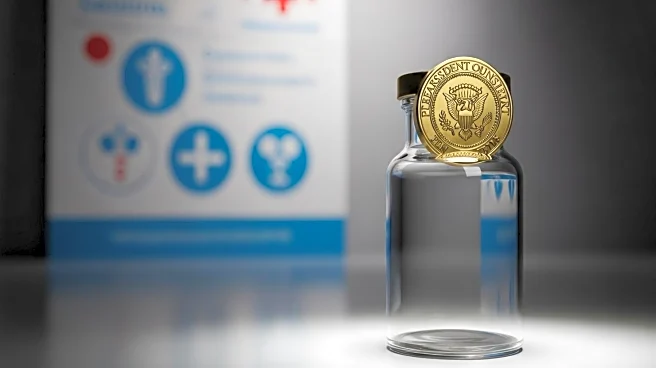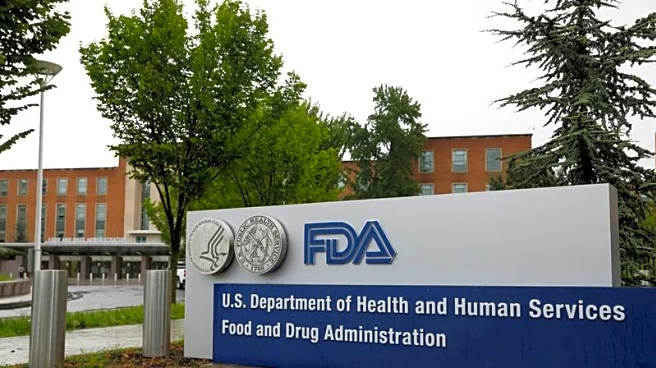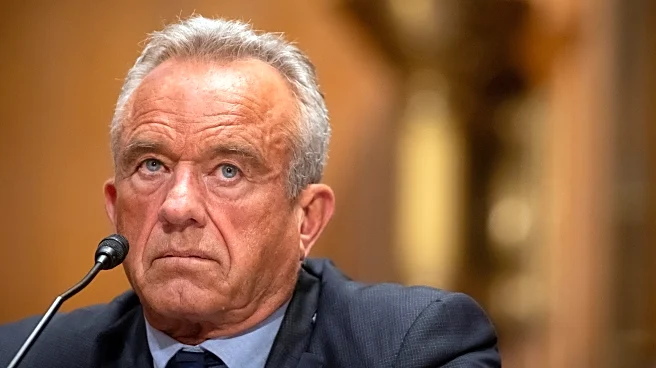What's Happening?
President Trump has issued a memorandum aimed at tightening regulations on pharmaceutical advertising, particularly direct-to-consumer marketing. The memorandum directs Health and Human Services Secretary Robert F. Kennedy Jr. and FDA Commissioner Marty Makary to lead efforts in ensuring transparency and accuracy in drug advertisements. The administration plans to enforce existing regulations more stringently, using cease-and-desist and warning letters to pharmaceutical companies that fail to comply. The memorandum stops short of banning pharmaceutical advertising, a measure previously proposed by Kennedy. The focus will be on digital and social media platforms, scrutinizing the role of influencers in drug promotion. The Trump administration aims to eliminate a 1997 provision that allows ads to include only brief excerpts of side effects, pushing for full disclosure within the ads themselves.
Why It's Important?
The memorandum could significantly impact the pharmaceutical industry's advertising strategies, potentially leading to a decrease in ad spend. Pharmaceutical companies have historically relied on brief ads that omit detailed side effect information, a practice that may no longer be viable. This change could affect TV networks that benefit from pharmaceutical ad revenue. The move is part of a broader effort to ensure consumers receive comprehensive information about drug risks, potentially leading to more informed healthcare decisions. The crackdown may also influence how social media platforms and influencers handle drug promotions, emphasizing transparency and compliance with regulations.
What's Next?
The Trump administration's enforcement of stricter advertising regulations may lead to increased scrutiny of pharmaceutical ads across all media platforms. Companies may need to adjust their marketing strategies to comply with new requirements, potentially affecting their advertising budgets. The FDA's role in monitoring and enforcing these regulations will be crucial, and further guidance or rule changes may be forthcoming. Stakeholders, including pharmaceutical companies and media outlets, will likely engage in discussions to navigate the new advertising landscape.













